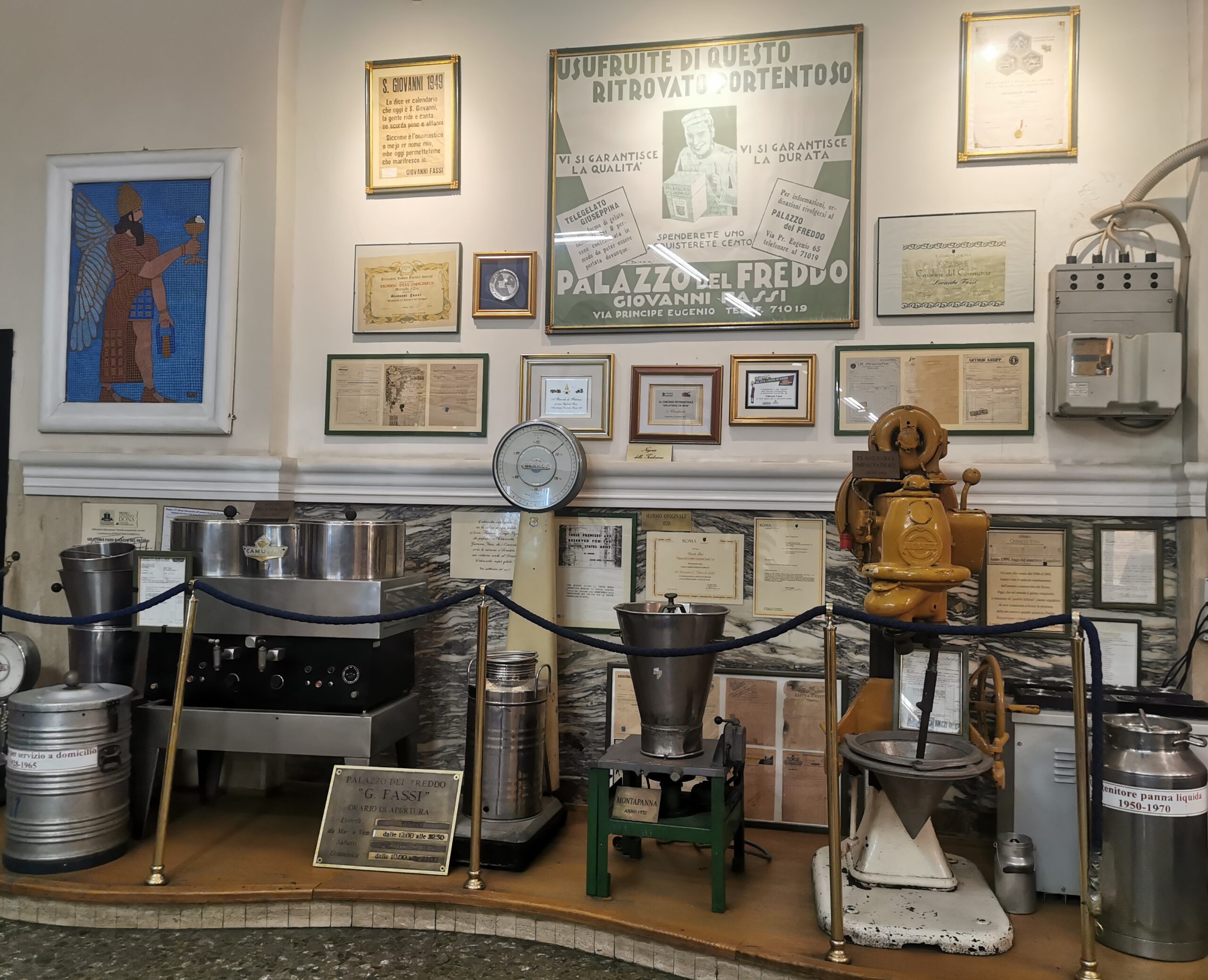Unbelievable Fassi, where your favorite ice cream was born
Story of the Italian artisanal gelateria that gave life to the world’s most famous gelatos…

The Fassi family’s activity began in 1880 thanks to the founder and progenitor Giacomo, born in Turin. Giacomo, in search of a business opportunity, headed south to explore Italy and in Palermo he met Giuseppina, who would become his wife and play a prominent role in the family’s success. In 1875, Giacomo and Giuseppina moved to Roma and in 1880 they opened a small shop on via IV Novembre.

The Fassi family’s activity began with the sale of ice and beer, while also experimenting with sorbets (at that time, gelato as we know it today did not yet exist). In the same year another significant event occurred: the birth of Giovanni Fassi, the main figure of the family and its business.
Since he was a boy, Giovanni helped his parents. In 1900, when Vittorio Emanuele III became king, Giovanni became an apprentice pastry chef and gelato maker at the Italian royal household.

Time passes and Giovanni grows up but resigns from serving at the royal court. An ordinance from the Quirinale – the King’s residence, now the President of the Republic (https://maps.app.goo.gl/z1ndKUBvYDhDkoCPA) – banned mustaches and beards in the kitchen, which was intolerable for him. Giovanni then returns to his family, opens a location in Piazza Navona and later in Via Piave. Here, he experiments with refrigerators bought in Germany and transforms ice cream into a popular food. Thanks also to the ideas of Giuseppina, two typical Fassi products are born: the “Caterinetta,” similar to many fashionable ice creams today, and the “Ninetto,” a wooden stick with cream covered in chocolate (the name is dedicated to Giovanni himself, who was called that because of his short stature). But the Fassi family sees beyond and in 1924 buys the current headquarters in Via Principe Eugenio. After years of renovation, in 1928, the “Palazzo del freddo” (Palace of Cold) is inaugurated and it is a building still admirable today.


However, in 1944, the Second World War arrives. The American Red Cross requisitions the Palazzo del Freddo, restoring the electrical system and producing ice cream industrially with a machine that Giovanni had purchased from a plant in Ohio. The machine is used to make fluffier, airier ice creams and is the only machine on the Italian market suitable for such processing. It is indeed used to produce large quantities of ice cream for the Allied troops.

In 1946, after the war ends, the Americans leave the Palazzo del Freddo. It is a decisive moment in the history of the Fassi family. Giovanni is invited by engineer Alfred Wiesner – administrator of the Fassi plant on behalf of the Red Cross during the war – and by Italo Barbiani (former worker of the ice cream parlor) to found a company for the production of industrial ice cream: “Algida.”
Giovanni refuses because he values the craftsmanship of his ice cream and wants to continue making it as tradition dictates. In the meantime, however, Algida becomes the most important ice cream company in Italy. Its products, such as Cremino or Viennetta, are clearly inspired by those of the Fassi gelateria: the former is similar to Ninetto, the latter is entirely inspired by Caterinetta.



Until, in 1998, Algida is acquired by the multinational Unilever. The British company maintains its brand – the Heartbrand – and adapts it with a different name in the national markets where it operates: Algida in many countries (Italy, Russia, Poland, Czech Republic, Romania, Slovenia, Hungary, etc.), Frigo in Spain, Good Humor in the United States, Langnese in Germany, Miko in France, Egypt and Morocco, Ola in Belgium, Luxembourg, the Netherlands, and Portugal, Wall’s in the United Kingdom and Saudi Arabia, etc.

Meanwhile, in 1977, at the age of 97, Giovanni Fassi passes away. In 1982, his wife Giuseppina also dies. However, the continuity of the family business has been ensured by their son and his descendants. During this time, the “Sanpietrino” is born, a small square block of chocolate-glazed semifreddo. The “sanpietrino” is so named because its shape resembles that of the sanpietrini, the typical cobblestones that characterize Roman pavements.

Today, Andrea Fassi, a direct descendant of Giovanni, travels the world to propose franchising contracts based on the transfer of exclusive recipes and brand licenses. This has led to the opening of many ice cream parlors in South Korea, 80 in Seoul alone, and 2 ice cream parlors in Shanghai. Since 2014, Andrea has been the CEO of the Palazzo del Freddo and responsible for production both in Italy and abroad.

In short, the events of history have shaken the Fassi gelateria, but they have not broken it. The roots of artisanal ice cream are still preserved here. Its story is so grand that today a small piece of it is scattered throughout the world.